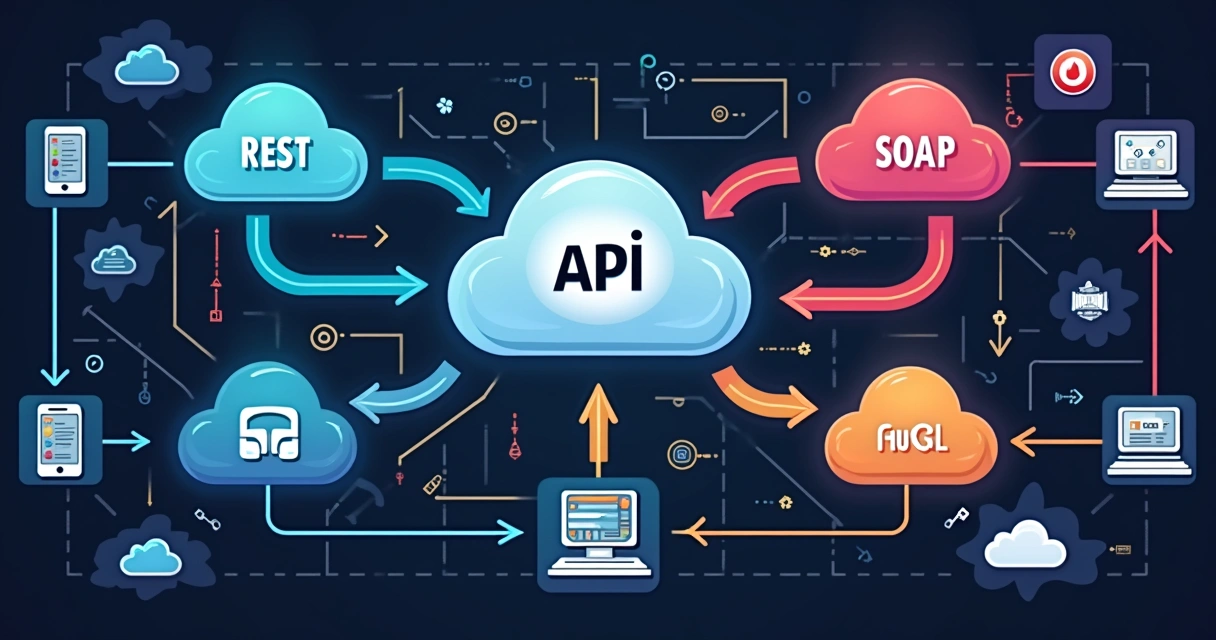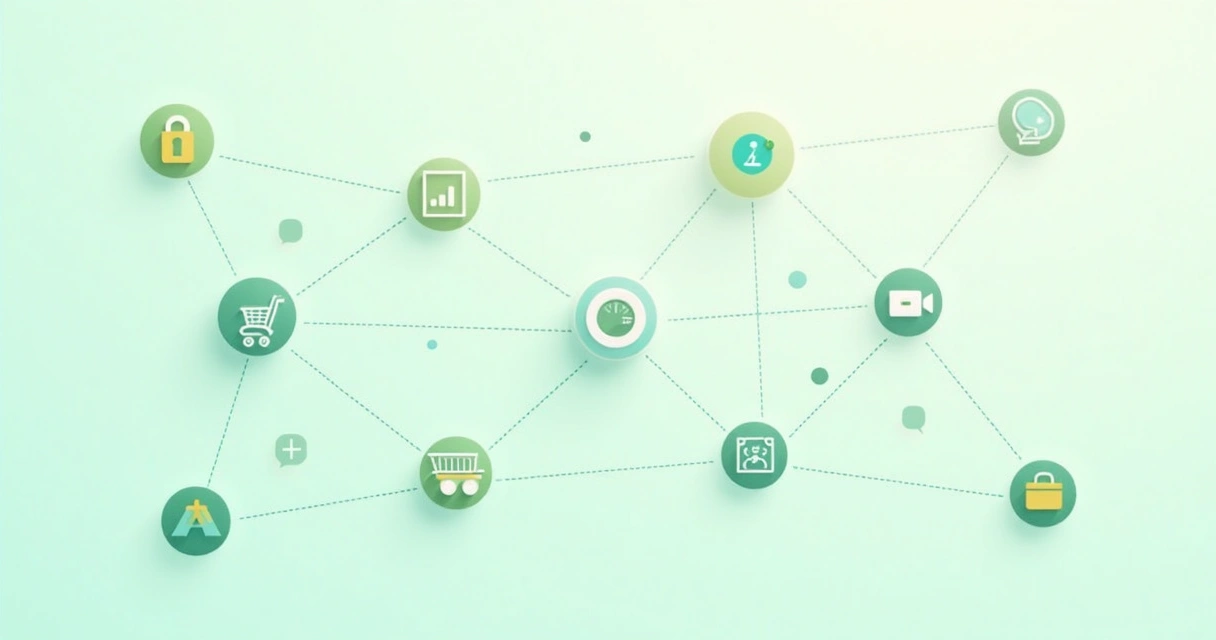Every so often, while I sit at my desk and oversee digital transformation projects for clients of various industries, I find myself thinking about how the hidden connections—the unseen threads—hold the entire modern business world together. I’m talking about that invisible handshake: the Application Programming Interface, or API. If you’ve ever wondered what stitches your favorite apps, tools, online shopping sites, and smart devices into an interconnected universe, this is where the story begins—and keeps growing.
What is an API? The bridge you use every day without noticing
I’ve always found it fascinating how something so abstract can be the backbone of daily technology. Whenever two programs “talk” to each other, sending data, requesting information, or even triggering actions, they’re not yelling across a crowded room. There’s a protocol, a translation, a safe bridge. An API is that structured bridge, defining rules and formats for how digital systems exchange messages and perform operations together.
For the technically curious, it’s coded logic: a set of defined methods and data structures that let separate pieces of software connect and collaborate without having to know each other’s secrets. If you think about software development as architecture, then APIs are the pipes, the joints, the wiring. All out of sight, but holding everything together.
APIs are the handshake that turns possibility into reality.
Take a food delivery app. When you check the map to track your order, the app isn’t somehow peering into a driver’s phone. Instead, it's sending requests to mapping and tracking APIs, getting back real-time positions, all in a language computers agree on. I find this simple but powerful concept unfolds into endless business possibilities. Not magic—just very well designed agreements.
Let’s break it down in a way that’s both simple, and a little bit magical.
 The main types of APIs—It’s more than one flavor
The main types of APIs—It’s more than one flavor
It surprised me years ago to discover how many types of APIs exist, each crafted for specific worlds: the web, cloud apps, machines, and even internal company systems. Over time, five main architectures have come to shape the modern landscape:
- Web APIs: Used for communication over the internet, often via HTTP. Think of them as the open doors between cloud services and websites.
- RESTful APIs: Probably the most common. Follow the Representational State Transfer paradigm—structure, statelessness, and CRUD (create, read, update, delete) operations.
- SOAP APIs: Older, but still used where security and formality matter, using XML messages and detailed protocols.
- GraphQL APIs: A relative newcomer, offering flexible, client-driven queries (just the data you need, nothing extra).
- Microservices APIs: Not a specific technology, but an approach—breaking big systems into small, independently communicating services, each with its own exposed interface.
Although plenty of subtle differences exist between them, in my work building custom AI and digital solutions, I’ve seen that the choice often boils down to the problem you’re solving—and how open or locked-down the data must be. Each has strengths and weaknesses. Sometimes, I’ll even design systems containing more than one kind simultaneously, hand-picked for each part’s job.
APIs come in flavors, each blending into the recipe of a modern digital business.
The variety also reminds me to watch out for compatibility and complexity. For example, integrating old SOAP-style interfaces into slick, mobile-first apps can take extra finesse. I pick my tools with care, always tailoring solutions for clients like I do at my project, Adriano Junior, where customization isn’t just a buzzword—it’s survival.
Some quick descriptions
- REST tends to rule for most straightforward web integrations—fast, lightweight, easy to read and test.
- SOAP still thrives in finance and government due to built-in security features.
- GraphQL is what I look at for applications that need to be nimble, scalable, and flexible about what data they fetch.
- Microservice APIs allow different modules to talk, regardless of their language or underlying technology.
What stands out? All these types serve as clear contracts between systems: "Send me this, and I’ll give you that, in this format, under these rules."
 Common API use cases—From login buttons to smart robots
Common API use cases—From login buttons to smart robots
APIs don’t live in a vacuum. I’ve seen their fingerprints on all kinds of projects, from the obvious to the truly unexpected:
- Authentication: Those “Login with Google” or “Sign up with Facebook” buttons are powered by authentication APIs, safely handling your credentials in the background.
- E-commerce: Online stores check product availability, shipping rates, and even payment status using a mesh of web APIs. This is the core of smooth checkout experiences.
- Internet of Things (IoT): When your smart thermostat turns on the AC, there’s usually an API call to a cloud platform involved.
- Social media: A simple “Share this post” button triggers a whole chain of API requests for posting, tracking, and analytics.
- Data aggregation and analytics: Government agencies now offer robust APIs, such as the U.S. Bureau of Labor Statistics Public Data API or Census Bureau Census of Governments APIs—letting apps and researchers tap into huge public datasets with just a few lines of code.
- Digital government and services: National APIs like the General Services Administration Digital Analytics Program API and NAEP Data Service API enable transparent, accessible metrics on everything from student performance to web traffic analytics.
One client of mine wanted to enhance his online shop’s reach by integrating with social channels. By connecting several APIs, I was able to automate product posts and gather campaign statistics without manual input. The result: less repetitive work, more timely campaign insights, and... well, a happier client.
Sometimes, the use case can be as big as connecting thousands of IoT sensors or as modest as a single sign-on feature for a corporate intranet. But the invisible thread—they almost all come back to APIs.
 The request-response cycle and client-server model—How data flies across the wire
The request-response cycle and client-server model—How data flies across the wire
Their magic is in the details. I’ve lost count of how many times business owners come to me with questions like, “But how does my store’s checkout talk to the credit card processor? Isn’t it all happening in the same cloud?” There's a rhythm, a protocol—not just a random chatter.
Client-server explained (in a way anyone can get)
At its core, every API call follows the client-server model: one side asks, and the other responds. Picture it like sending a very structured letter to a company: “I’d like to know the price of product X.” The server receives it, processes it, and mails back a reply, formatted just how you expect.
- Client: Any application or service that “wants” something—data, an action, a check.
- Server: The keeper of information or the doer of actions, responding only when called.
Each API endpoint is a dedicated mailbox—one job, one address.
End users never see this traffic—it all happens within milliseconds, behind the scenes. In most cases, this dialogue takes place over HTTP or HTTPS. The structure of the request and response depends on the API type, but formats like JSON and XML are common. Sometimes plain old HTML too, although that’s rarer.
What’s an endpoint in API terms?
An endpoint is simply a specific URL where a given function lives. Think of a banking app’s API—there might be one endpoint to get your balance, a different one for transfers, another for transaction histories. Each endpoint is a unique address where a request knows it will get an answer, usually in a consistent format.
When designing or building solutions (like at Adriano Junior), I treat endpoints almost like contracts—they tell you exactly what they’ll give you and what you must send in return. If you break the contract—wrong format, missing authorization—they refuse politely, or sometimes not so politely.
 Protocols and data formats—Choosing the right carrier for the message
Protocols and data formats—Choosing the right carrier for the message
The brilliance of APIs is not just in the request and response, but in how they standardize communication. I’m sometimes surprised at how few new developers pay clos...
